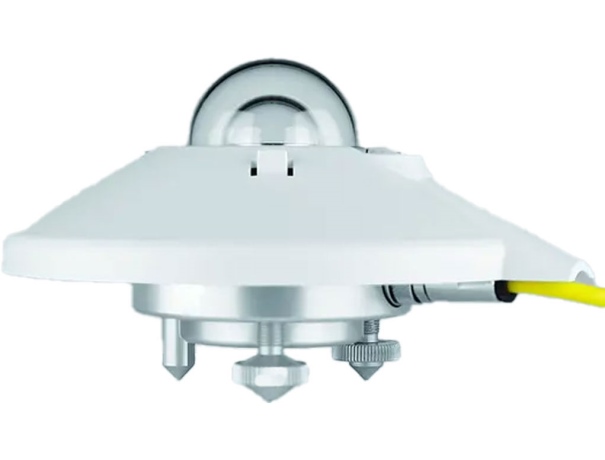Pyranometers are essential instruments used to measure solar radiation. They help in determining the efficiency of solar panels by providing accurate measurements of solar irradiance.
Let’s dive into the various factors that can influence a pyranometer's performance.
How a Pyranometer Works
Understanding how a pyranometer functions is key to grasping the factors that impact its performance.
Basic Working Principle
A pyranometer measures the solar radiation received from a hemispherical field of view. It typically consists of a thermopile sensor that converts thermal energy into an electrical signal proportional to the incident solar radiation.
Key Components
- Thermopile Sensor: Detects and converts thermal energy.
- Glass Dome: Protects the sensor and allows solar radiation to pass through.
- Base Plate: Provides stability and helps in accurate placement.

Factors Affecting Pyranometer Performance
Several factors can affect the performance of a pyranometer, categorized into environmental, physical, and operational factors.
Environmental Factors
Temperature Variations
Extreme temperatures can affect the sensitivity and accuracy. Most devices are designed to compensate for temperature changes, but calibration might still be needed for precise measurements.
Humidity Levels
High humidity can lead to condensation inside the pyranometer, affecting its performance. Ensuring a good seal and using desiccants can mitigate this issue.
Physical Factors
Sensor Placement
The location of the pyranometer plays an important role. It should be placed in an open area, free from shadows and reflections that could skew the readings.
Angle of Incidence
The angle at which sunlight hits the sensor can affect the accuracy. Ideally, the pyranometer should be level and positioned to receive direct sunlight.
Dirt and Debris
Accumulation of dirt, dust, or bird droppings on the glass dome can significantly reduce the accuracy. Regular cleaning is essential to maintain performance.
Operational Factors
Calibration
Regular calibration is necessary to ensure the accuracy of the measurements. Over time, the sensor can drift, leading to inaccurate readings if not properly calibrated.
Maintenance
Routine maintenance, including cleaning and checking for physical damage, helps in keeping the pyranometer in optimal condition.
Impact of Environmental Factors
Detailed Analysis of Temperature Effects
Temperature fluctuations can lead to errors in measurement. High temperatures might cause the sensor to overheat, while low temperatures can reduce sensitivity. Then often have built-in temperature compensation, but regular calibration is still essential.
Role of Humidity
Humidity can cause condensation on the sensor, affecting the readings. Using pyranometers with proper sealing and incorporating desiccants can help mitigate these effects.
Influence of Weather Conditions
Weather conditions like rain, snow, and fog can impact the performance. Protective measures like installing heating elements to prevent snow buildup can be beneficial.
Impact of Physical Factors
Optimal Sensor Placement
The placement is critical. It should be installed in an unobstructed location to avoid shadows and reflections. The height and surroundings should be considered to minimize interference.
Importance of the Angle of Incidence
The pyranometer should be aligned properly to ensure that the angle of incidence of the solar radiation is optimal. This ensures that the maximum amount of sunlight is measured accurately.
Effect of Dirt and Debris Accumulation
Regular cleaning of the glass dome is necessary to prevent dirt and debris from accumulating. This ensures that the sensor receives unobstructed solar radiation.
Operational Best Practices
Regular Calibration Protocols
Calibration should be done periodically to maintain accuracy. Following manufacturer guidelines for calibration intervals and procedures is crucial.
Maintenance Tips
Regularly inspect the pyranometer for any signs of damage or wear. Clean the glass dome regularly and check for any physical obstructions that might affect performance.